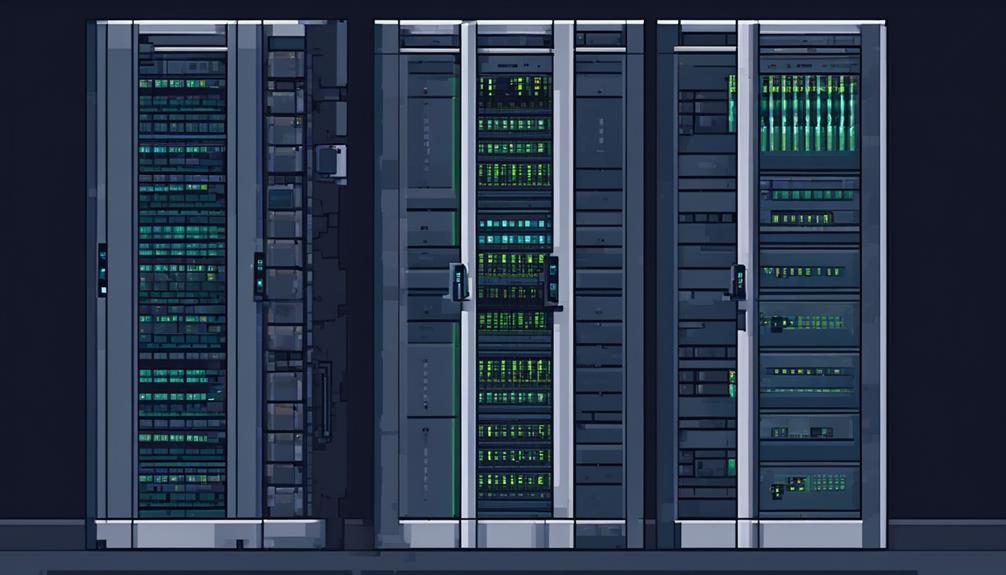In today's digital landscape, where organizations increasingly rely on cloud-based infrastructure, ensuring robust security measures is of paramount importance. While software solutions play a significant role in safeguarding data and systems, the role of hardware in cloud security should not be underestimated.
Cloud Security Hardware Essentials provide a strong foundation for protecting sensitive information and mitigating potential risks. From hardware components designed to enhance data protection to specialized tools tailored for securing cloud environments, the integration of these essentials is crucial to maintaining a secure and resilient cloud infrastructure.
In this discussion, we will delve into the key hardware elements, explore their role in securing cloud environments, and uncover the best practices and future trends in cloud security hardware. This will leave you with a comprehensive understanding of the essentials needed for robust cloud security.
Key Takeaways
- Hardware components such as Hardware Security Modules (HSMs) and secure cloud storage appliances play a crucial role in providing secure encryption key management and access control mechanisms.
- Hardware-based security solutions work in tandem with software-based measures to strengthen overall cloud security posture.
- Hardware features like encryption accelerators and secure storage devices ensure data protection at rest and in transit.
- Hardware components such as servers, storage devices, and networking hardware form the backbone of cloud infrastructure and are integral to securing cloud environments.
Hardware Components for Cloud Security

Hardware components play a crucial role in bolstering the security of cloud environments by providing essential features such as encryption key management, network protection, intrusion detection, secure storage, and multi-factor authentication. These components are vital in enhancing the overall cloud security posture and ensuring the protection of sensitive data and resources.
One key hardware component is the Hardware Security Module (HSM), which offers secure encryption key management and protection for sensitive data in the cloud. HSMs provide a dedicated and tamper-resistant environment for storing and managing encryption keys, ensuring that only authorized individuals can access and use them. By utilizing HSMs, cloud service providers can enhance the security of their infrastructure and protect against unauthorized access to encrypted data.
Another important hardware component is the deployment of network firewall appliances. These physical appliances act as the first line of defense, protecting the cloud infrastructure from unauthorized access and cyber threats. By implementing network firewalls at cloud entry points, cloud service providers can enforce access controls, filter incoming and outgoing network traffic, and detect and block malicious activities. This added layer of protection helps to mitigate the risk of unauthorized access and potential data breaches.
Intrusion Detection and Prevention Systems (IDPS) are also crucial hardware components for cloud security. These physical devices monitor and defend cloud networks from potential intrusions and attacks. By analyzing network traffic and identifying suspicious behavior, IDPS devices can provide real-time alerts and take proactive measures to prevent security incidents. This enhances the overall security posture of the cloud infrastructure and helps maintain the integrity and confidentiality of data stored in the cloud.
Furthermore, secure cloud storage appliances play a significant role in protecting sensitive data in the cloud. These hardware-based solutions offer encryption and access control mechanisms for cloud storage, providing an additional layer of data protection. By encrypting data at rest and in transit, secure cloud storage appliances ensure that even if unauthorized individuals gain access to the data, they cannot decipher it without the encryption keys. This protects the confidentiality and integrity of stored data and reduces the risk of data breaches.
Lastly, physical Multi-Factor Authentication (MFA) devices are essential hardware components for cloud security. Implementing hardware-based MFA tokens or devices adds a robust layer of identity verification for accessing cloud resources. By requiring users to provide something they possess (e.g., a physical token) in addition to something they know (e.g., a password), MFA devices significantly reduce the risk of unauthorized access to cloud resources. This strengthens the overall security posture of the cloud environment and safeguards against identity theft and unauthorized account access.
Importance of Hardware in Cloud Security
The importance of hardware in cloud security cannot be overstated. Hardware plays a critical role in ensuring data protection by providing physical security measures at the infrastructure level, preventing unauthorized access and tampering.
Additionally, hardware components such as firewalls, routers, and switches establish secure access points and authentication mechanisms, strengthening overall cloud security posture.
With its ability to support encryption and decryption processes, hardware-based security solutions offer resilience against cyber threats, augmenting software-based security measures and providing a robust defense for cloud environments.
Hardware's Role in Security
Hardware plays a vital and indispensable role in establishing the foundational security infrastructure for cloud environments. Here are five key ways in which hardware contributes to cloud security:
- Physical protection: Hardware provides physical safeguards for critical components like servers, storage, and networking devices, ensuring the security of cloud data and applications.
- Hardware-based security features: Secure boot, Trusted Platform Module (TPM), and hardware encryption offer strong protection against unauthorized access and data breaches.
- Hardware accelerators: Cryptographic processors and secure enclaves enhance the performance and efficiency of security processes in the cloud.
- Isolation mechanisms: Hardware-based virtualization and containerization create secure partitions and boundaries for running workloads, minimizing the risk of unauthorized access and data leakage.
- Enhanced security capabilities: Hardware helps to enforce security policies, ensure compliance, and enable secure remote access to cloud environments.
Ensuring Data Protection
With its crucial role in establishing physical security measures and encryption protocols, hardware plays a pivotal role in ensuring data protection in cloud security. Hardware-based encryption and access controls are essential for safeguarding data integrity and confidentiality in cloud environments. The use of hardware security modules (HSMs) can ensure secure key management and cryptographic operations, enhancing overall data protection in the cloud. Hardware-based secure boot and trusted platform modules (TPM) are vital for ensuring the integrity of cloud infrastructure and protecting against firmware-based attacks. Additionally, hardware-based intrusion detection and prevention systems (IDPS) can help detect and mitigate threats at the network and system level, bolstering data protection in cloud environments.
| Hardware Features | Importance in Data Protection |
|---|---|
| Encryption | Ensures data confidentiality and integrity |
| Access Controls | Protects against unauthorized access to data |
| Hardware Security Modules (HSMs) | Ensures secure key management and cryptographic operations |
| Secure Boot and TPM | Ensures the integrity of cloud infrastructure |
| Intrusion Detection and Prevention Systems (IDPS) | Detects and mitigates threats at the network and system level |
Understanding Cloud Infrastructure Hardware
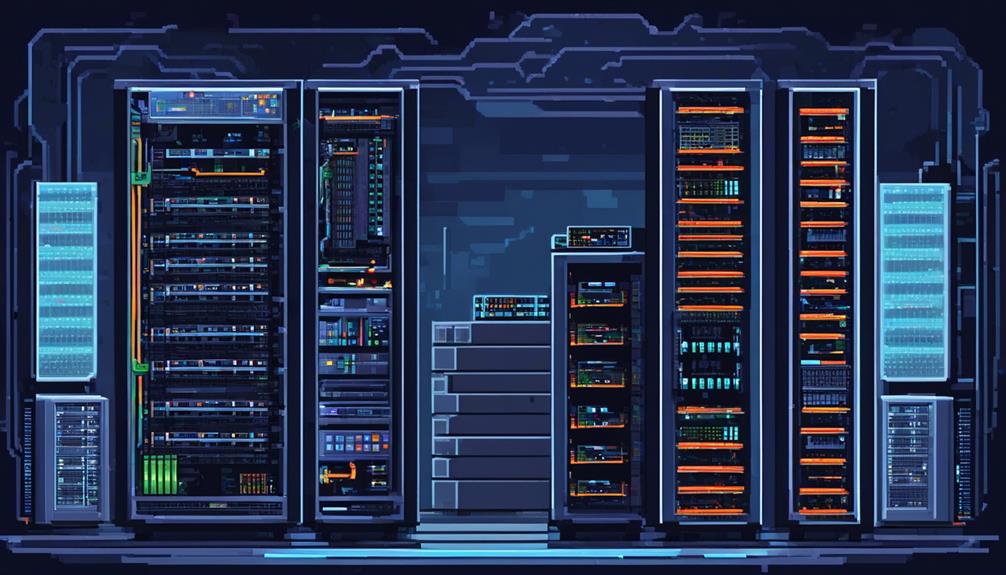
Understanding cloud infrastructure hardware is crucial for ensuring optimal performance, scalability, and reliability in cloud environments. It involves comprehending the hardware components, such as servers and storage devices, and their configurations, as well as grasping the basics of network infrastructure.
Hardware Components Explained
Cloud infrastructure hardware encompasses physical components such as servers, storage devices, and networking equipment that are vital for the operation and functionality of a cloud environment. Understanding these hardware components is essential for designing, deploying, and maintaining a secure and efficient cloud infrastructure.
Here are the key hardware components explained:
- Servers: The backbone of cloud infrastructure, servers process and store data, run applications, and manage network traffic.
- Storage devices: Hard drives and solid-state drives provide long-term data retention and retrieval capabilities for cloud applications and services.
- Networking hardware: Routers and switches enable communication and data transfer between different components of the cloud infrastructure.
These hardware components form the foundation of a cloud environment, and their proper configuration and management are crucial for ensuring cloud security and optimal performance.
Server Configurations Overview
Having established a foundation of hardware components essential for cloud infrastructure, the next crucial aspect to explore is the overview of server configurations.
Server configurations encompass the hardware and software settings of a server, including CPU, memory, storage, and network parameters. Understanding server configurations is vital for optimizing performance, scalability, and security in the cloud.
Configuration management tools like Puppet and Chef automate and standardize server configurations across the cloud environment. These configurations play a significant role in workload distribution, fault tolerance, and resource allocation in cloud deployments.
Cloud service providers offer various server configuration options tailored to different application workloads and performance requirements. By carefully configuring servers, organizations can enhance the security and efficiency of their cloud infrastructure.
Network Infrastructure Basics
Network infrastructure forms the backbone of cloud services, providing the necessary connectivity and data transmission capabilities for efficient cloud operations. Understanding network infrastructure basics is essential for grasping how cloud hardware operates and interacts within a network environment. Here are some key points to consider:
- Components like routers, switches, and firewalls are integral parts of network infrastructure, managing data flow and ensuring security.
- Properly designing and configuring network infrastructure is crucial for optimizing cloud performance, reliability, and security.
- Network security is a critical aspect of cloud security, and network infrastructure plays a key role in implementing security controls.
- Knowledge of network infrastructure basics is fundamental for troubleshooting connectivity issues and ensuring smooth cloud operations.
Key Hardware Elements for Data Protection
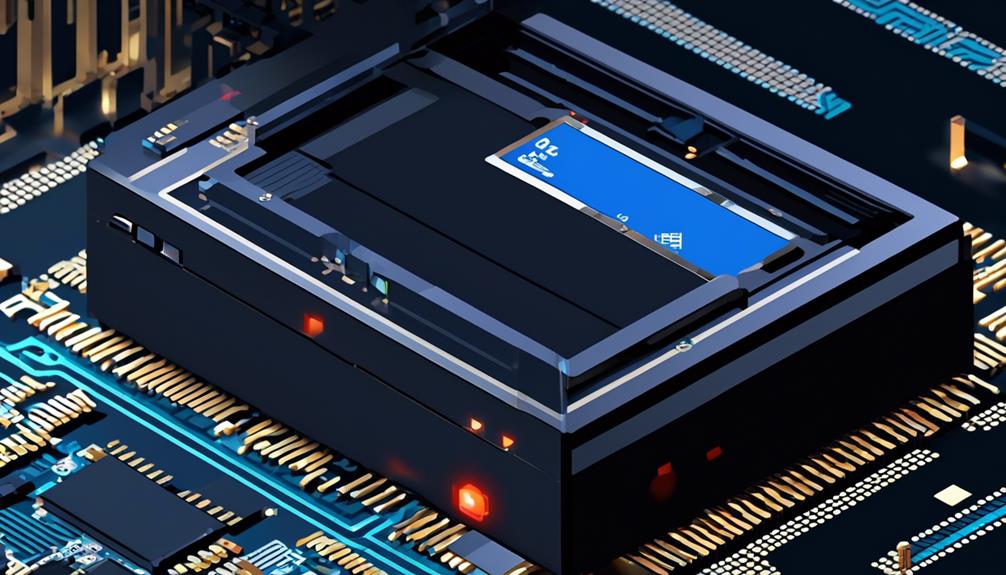
Key hardware elements for data protection play a crucial role in ensuring the security and integrity of sensitive information. In the context of cloud security, where data is stored and accessed remotely, it becomes even more important to have robust hardware measures in place.
One such hardware component is the Hardware Security Module (HSM). HSMs provide secure key storage and cryptographic operations, which are essential for protecting sensitive data. These modules are designed to securely generate, store, and manage cryptographic keys, ensuring that they are not exposed to unauthorized access. By offloading cryptographic calculations to the HSM, the risk of key theft or compromise is greatly reduced.
Another key hardware element is the Trusted Platform Module (TPM). TPMs ensure the integrity of the system and secure the boot processes. They provide a secure environment for storing and executing critical security functions, such as encryption and decryption operations. This helps prevent unauthorized modifications to the system, protecting against malware attacks and ensuring the confidentiality and integrity of data.
Hardware-based encryption accelerators are also essential for data protection in cloud storage. These accelerators enhance both data protection and performance by offloading encryption and decryption operations to dedicated hardware. This reduces the burden on the CPU and improves overall system efficiency.
Secure storage devices, such as self-encrypting drives (SEDs), are another important hardware element. SEDs automatically encrypt data at rest, ensuring that it remains secure even if the physical device is stolen or lost. This provides an additional layer of protection for sensitive information.
Lastly, hardware-based authentication tokens, like USB security keys, offer strong access control. These tokens provide a physical means of verifying user identity, reducing the risk of unauthorized access to cloud resources.
Role of Hardware in Securing Cloud Environments
In the realm of securing cloud environments, the role of hardware is paramount in providing physical security for data centers and network infrastructure. Cloud security hardware plays a critical role in safeguarding sensitive information and ensuring the integrity and confidentiality of data in the cloud.
Here are some key ways in which hardware contributes to securing cloud environments:
- Hardware security modules (HSMs): These specialized devices securely store and manage cryptographic keys, offering robust protection against unauthorized access and ensuring the secure encryption and decryption of data in the cloud.
- Network hardware: Firewalls, routers, and switches are essential components for enforcing access controls, monitoring network traffic, and protecting against network-based attacks. They play a crucial role in securing the network infrastructure of cloud environments.
- Trusted platform modules (TPMs) and secure enclave processors: These secure hardware components establish a root of trust and enable secure boot processes. By preventing tampering and unauthorized access, they enhance the overall security posture of cloud systems.
- Hardware-based encryption accelerators: These devices offload the computational burden of encryption and decryption, improving performance while ensuring the confidentiality of data at rest and in transit within cloud infrastructures.
- Secure storage devices: Hardware-based secure storage devices, such as self-encrypting drives, protect sensitive data stored in the cloud. These devices provide an additional layer of protection, ensuring that even if physical storage media are compromised, the data remains encrypted and inaccessible.
Hardware Solutions for Cloud Security
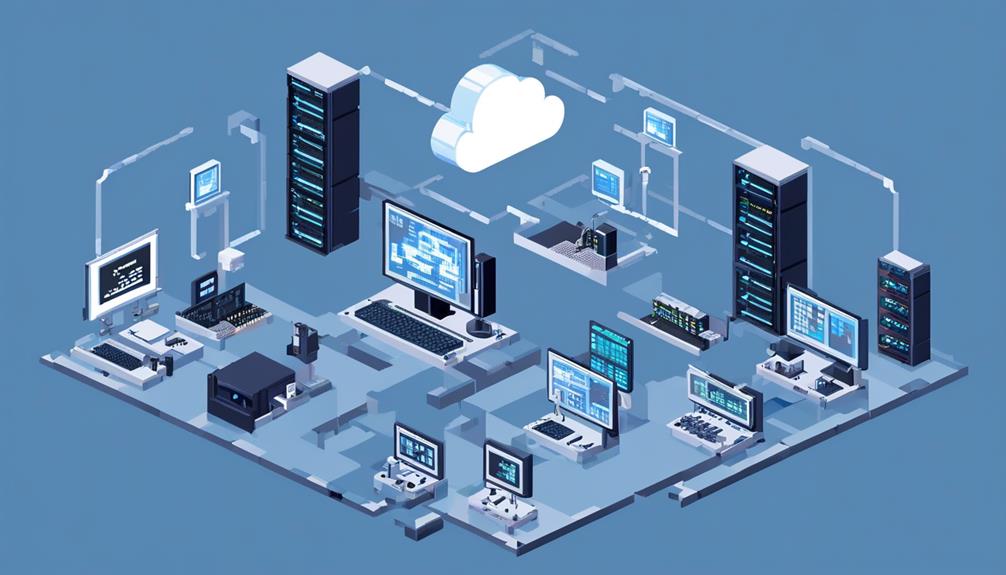
When it comes to hardware solutions for cloud security, encryption plays a crucial role in protecting sensitive data by encoding it in a way that can only be accessed with the correct decryption key.
Firewalls act as a barrier between the cloud environment and external networks, monitoring and controlling incoming and outgoing traffic to prevent unauthorized access.
Intrusion Detection Systems (IDS) are designed to detect and respond to potential security breaches by analyzing network traffic and identifying any suspicious activity.
These hardware solutions work together to enhance the security posture of cloud environments and protect against various threats.
Encryption for Data Protection
Hardware solutions for data encryption in cloud environments provide robust protection against unauthorized access, ensuring the integrity and confidentiality of stored data. Encryption plays a vital role in cloud security, preventing data manipulation or theft and enhancing overall security and compliance with data protection regulations.
Here are some key points regarding encryption for data protection in the cloud:
- Hardware-based encryption solutions render data unreadable to unauthorized users, providing an additional layer of security.
- Some cloud providers offer automatic end-to-end data encryption, protecting data at rest and in transit.
- Hardware solutions for data encryption seamlessly integrate into existing cloud environments, offering reliable defense against unauthorized access.
- Ensuring the security of data through encryption is crucial for organizations operating in cloud environments, mitigating potential risks and vulnerabilities.
Firewall for Network Security
With the foundation of data protection through encryption established, the next essential hardware solution for cloud security is the implementation of a firewall for network security. Firewalls act as a barrier between trusted internal networks and untrusted external networks, controlling incoming and outgoing traffic. By inspecting and blocking or allowing traffic based on predefined security rules, firewalls protect against unauthorized access and cyber threats.
When implemented as hardware devices, firewalls offer high-performance security with dedicated processing power. They provide visibility into network traffic, enabling organizations to monitor and control data flow for enhanced security.
In the context of cloud security, firewalls play a crucial role in securing cloud-based infrastructure, ensuring seamless protection for virtualized and dynamic cloud environments.
Intrusion Detection Systems
Intrusion Detection Systems (IDS) serve as critical hardware solutions for cloud security, actively monitoring and analyzing network traffic to detect and prevent unauthorized access or malicious activities within cloud-based infrastructure and services.
Here are some key facts about IDS and their role in securing cloud environments:
- IDS help mitigate security risks associated with the cloud by continuously monitoring network traffic for signs of intrusion or potential threats.
- These hardware solutions are designed to work seamlessly in virtualized and dynamic cloud environments, providing continuous protection and threat detection.
- IDS leverage cloud-native features and APIs to effectively secure cloud environments, enhancing overall security posture and resilience against cyber threats.
- Notable examples of IDS hardware solutions for cloud security include Check Point's CloudGuard, which offers robust intrusion detection capabilities.
Hardware Considerations for Cloud Security

Optimizing hardware for cloud-native security solutions is crucial in ensuring effective protection in virtualized and dynamic cloud environments. When considering hardware for comprehensive cloud security, organizations should focus on key factors to address security vulnerabilities and enhance overall protection.
One essential hardware consideration is the Cloud Access Security Broker (CASB). CASB hardware should prioritize the implementation of zero trust access control, offering insight into user and application access. It should provide visibility into shadow IT and potential security threats, while ensuring compliance with security policies.
Another important hardware consideration is the Secure Access Service Edge (SASE). SASE hardware should cater to the need for a centralized, cloud-delivered security architecture. It should be suitable for distributed applications and users, and include components like Zero-Trust Network Access (ZTNA) and Firewall-as-a-Service (FWaaS) to enhance security measures.
Cloud Workload Protection Platform (CWPP) hardware considerations are also crucial. Organizations should focus on hardware that enables the discovery of workloads in cloud-based deployments and on-prem infrastructure. It should facilitate vulnerability scans, offer mitigation options, and provide runtime protection, malware detection, and network segmentation to protect against common security threats.
Incorporating these hardware considerations within cloud-native security solutions is essential in mitigating security risks and ensuring a robust security posture. By optimizing hardware for cloud security, organizations can enhance their ability to detect and address security vulnerabilities, protect sensitive data, and maintain the integrity of their cloud environments.
Essential Hardware Features for Cloud Protection
When it comes to essential hardware features for cloud protection, key encryption methods and robust access controls play a vital role.
Key encryption methods, such as hardware-based encryption, ensure the security of data both in transit and at rest, safeguarding it from unauthorized access.
Robust access controls, on the other hand, enable organizations to enforce strict authentication and authorization measures, limiting access to sensitive data and resources within the cloud environment.
Key Encryption Methods
Key encryption methods are crucial hardware features that play a vital role in protecting cloud data. To ensure the security of cloud environments, several key encryption methods and hardware features are employed:
- RSA, AES, and ECC: These encryption algorithms are commonly used in cloud environments to encrypt and decrypt data securely.
- Hardware Security Modules (HSMs): HSMs provide a secure and tamper-resistant environment for storing and managing encryption keys in the cloud.
- Quantum-Resistant Encryption: With the advent of quantum computing, encryption algorithms and hardware that can withstand quantum attacks are increasingly important for future-proofing cloud security.
- Secure Enclaves and TPMs: These hardware-based technologies provide protection for encryption keys and sensitive data in the cloud by isolating them from the rest of the system.
- Hardware-Accelerated Encryption: Hardware-accelerated encryption and decryption capabilities improve performance and security for cloud workloads.
Robust Access Controls
Robust access controls are essential hardware features that ensure only authorized users can access specific resources in the cloud environment, preventing unauthorized access and data breaches. Access controls play a crucial role in maintaining a robust security posture in cloud environments by enforcing strict permissions and authentication mechanisms. Granular access controls and role-based access policies contribute to a secure cloud infrastructure, minimizing the risk of internal and external threats to cloud resources. Integration of access controls with identity and authentication systems enhances the overall security posture of cloud environments. Implementing robust access controls is vital for effective access management, allowing organizations to define and enforce fine-grained access policies based on user roles, responsibilities, and business requirements. By incorporating access controls into the hardware infrastructure, organizations can ensure the confidentiality, integrity, and availability of their cloud resources.
| Benefits of Robust Access Controls |
|---|
| Prevent unauthorized access |
| Protect against data breaches |
| Enforce strict permissions |
| Components of Robust Access Controls |
| Granular access controls |
| Role-based access policies |
| Integration with identity systems |
| Importance of Robust Access Controls |
| Minimize internal and external threats |
| Enhance security posture |
| Effective access management |
Hardware-Based Measures for Cloud Security

Hardware-based measures play a crucial role in enhancing the security of cloud environments by providing physical barriers against unauthorized access. These measures utilize specialized hardware components to ensure the integrity and confidentiality of data in the cloud. Here are five key hardware-based measures for cloud security:
- Hardware Security Modules (HSMs): HSMs offer tamper-resistant protection for cryptographic keys and sensitive data. They provide secure key management and perform cryptographic operations, such as encryption and decryption, within a secure hardware environment.
- Trusted Platform Modules (TPMs): TPMs enable secure storage of keys and cryptographic operations. They provide a hardware-based root of trust, ensuring that only authorized software and configurations are allowed to run on a cloud platform.
- Hardware-Based Secure Boot: Secure boot is a process that verifies the integrity and authenticity of the cloud infrastructure at startup. It ensures that only trusted software and firmware components are loaded, protecting against bootkits and other malicious attacks.
- Hardware Security Devices: Smart cards, USB tokens, and other hardware security devices offer strong authentication for cloud access. These devices store cryptographic keys and require physical presence or possession for authentication, adding an additional layer of security.
- Physical Security Measures: In addition to specialized hardware components, physical security measures, such as data center access controls, video surveillance, and intrusion detection systems, are essential for protecting the cloud infrastructure from physical threats.
Implementing hardware-based measures is crucial for ensuring the security and integrity of cloud environments. By incorporating these measures, organizations can significantly enhance the protection of their sensitive data and mitigate the risk of unauthorized access.
Cloud security hardware essentials, such as HSMs, TPMs, hardware-based secure boot, hardware security devices, and physical security measures, should be integrated into the overall cloud security strategy to create a robust and comprehensive security posture.
Ensuring Data Security With Cloud Hardware
Implementing cloud hardware solutions is crucial for ensuring the security and integrity of data in cloud environments. Cloud-native security hardware offers specialized protection specifically designed for cloud-based infrastructure and services. It helps mitigate risks associated with the cloud by seamlessly working in virtualized and dynamic environments.
Cloud hardware leverages cloud-native features and APIs to provide effective data protection and security. By integrating with cloud platforms, it ensures that data remains secure throughout its lifecycle, from storage and transmission to processing and access. This is essential for organizations that rely on the cloud to store and process sensitive and confidential information.
One example of a cloud-native security hardware platform is Check Point's CloudGuard. It offers comprehensive protection for cloud environments, including threat prevention, network security, and data loss prevention. By utilizing advanced technologies such as machine learning and behavioral analysis, CloudGuard can detect and mitigate potential threats in real-time.
Cloud hardware is essential for ensuring data security in cloud environments. It provides robust measures to safeguard against potential threats and breaches. With the increasing adoption of cloud computing, organizations need to prioritize the implementation of cloud security hardware to protect their data and maintain customer trust.
Hardware Tools for Cloud Security

Hardware tools play a crucial role in enhancing the security of cloud environments by providing robust encryption key management, tangible protection against malicious activities, and secure authentication strategies. These hardware solutions are essential for safeguarding cloud-based assets and ensuring the integrity and confidentiality of sensitive data.
Here are five hardware tools that are vital for cloud security:
- Hardware Security Modules (HSMs): HSMs offer secure encryption key management and cryptographic operations within the cloud. They provide a secure environment for generating, storing, and managing encryption keys, ensuring the protection of data transmitted and stored in the cloud.
- Physical network appliances: Firewalls and intrusion detection/prevention systems act as the first line of defense against cyber attackers. These physical devices monitor network traffic, detect and prevent unauthorized access, and mitigate security issues, reducing the risk of a data breach.
- Secure hardware-based authentication tokens: USB or smart cards enhance access control in the cloud by implementing multi-factor authentication. These physical tokens add an extra layer of security, reducing the likelihood of unauthorized access and protecting against identity theft.
- Physical servers with secure boot and TPM functionalities: Servers with secure boot and trusted platform module (TPM) ensure the integrity and security of cloud workloads and applications. They verify the integrity of the boot process and provide a secure environment for sensitive operations, mitigating the risk of exposing sensitive data.
- Hardware-based secure enclaves: Technologies like Intel SGX or AMD SEV provide isolated execution environments for sensitive cloud workloads. These enclaves enhance data protection and privacy by ensuring that sensitive computations are performed securely, even in the presence of potential threats.
Securing Cloud Infrastructure With Hardware
Securing cloud infrastructure with hardware is paramount in reducing risks and ensuring robust protection for cloud-based services and environments. Comprehensive security measures are essential to safeguard against potential cyber threats and unauthorized access.
Hardware security solutions designed specifically for cloud infrastructure play a crucial role in enhancing the overall security posture of cloud environments.
Cloud-native hardware security seamlessly integrates with virtualized and dynamic cloud setups, leveraging native features and APIs for robust protection. By utilizing hardware-based security measures, organizations can mitigate potential threats and vulnerabilities, ensuring the integrity and confidentiality of their data. Multi-factor authentication and encryption are examples of hardware-based security measures that provide an additional layer of defense against unauthorized access and potential breaches.
One example of hardware-based security application in cloud environments is Check Point's CloudGuard. This solution offers comprehensive security capabilities, including firewall, intrusion prevention, and anti-malware, specifically designed for cloud infrastructure. By using hardware-based security, organizations can enforce granular access control policies, monitor and detect suspicious activities, and respond to incidents in real-time.
Implementing hardware-based security measures not only protects against external threats but also safeguards against insider attacks. By securing cloud infrastructure with hardware, organizations can ensure the confidentiality, integrity, and availability of their cloud-based services. This approach enables organizations to maintain compliance with industry regulations and standards, such as the General Data Protection Regulation (GDPR) and the Payment Card Industry Data Security Standard (PCI DSS).
Best Practices for Hardware-Based Cloud Security
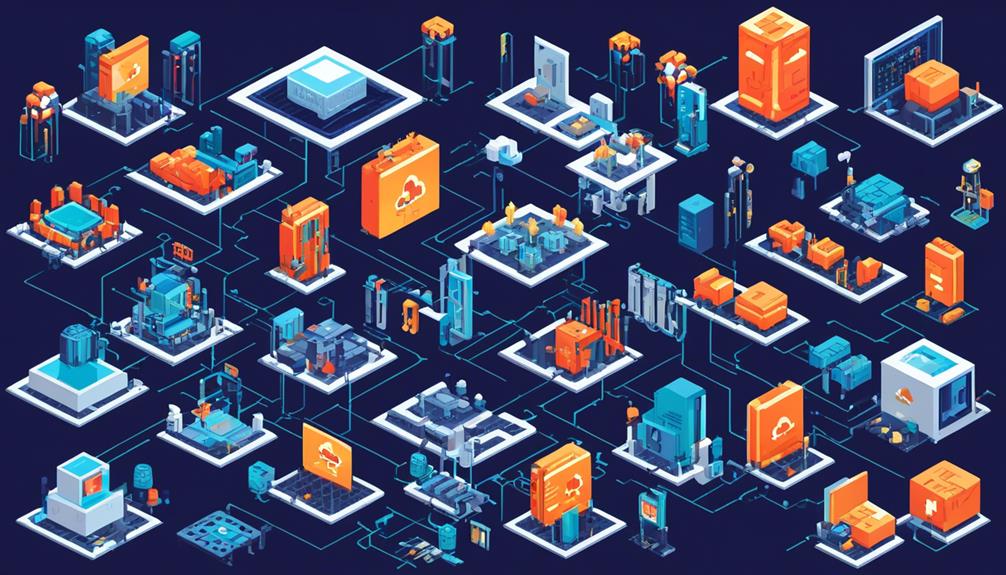
To ensure robust protection for cloud-based services and environments, organizations should follow best practices for implementing hardware-based security measures. These practices help safeguard sensitive data, prevent unauthorized access, and mitigate security vulnerabilities.
Here are some key best practices for hardware-based cloud security:
- Regularly update and patch hardware: Keeping hardware up to date is crucial in mitigating security vulnerabilities. Regular updates and patches ensure that any identified security flaws are addressed promptly, reducing the risk of exploitation.
- Implement multi-factor authentication and credential rotation: Multi-factor authentication adds an extra layer of security by requiring users to provide multiple forms of identification. Additionally, regularly rotating credentials reduces the chances of unauthorized access and data breaches.
- Encrypt data uploaded to cloud services: Encryption is essential for protecting sensitive data. By encrypting data before uploading it to the cloud, organizations render it unreadable to unauthorized users, ensuring confidentiality and integrity.
- Utilize cloud security posture management tools: These tools help organizations identify and remediate security issues in their cloud infrastructure. By continuously monitoring and assessing the security posture, organizations can reduce the attack surface and keep their cloud environment secure.
- Consider the importance of automation in cloud security: Automation plays a vital role in cloud security as it enables security teams to stay on top of alerts and developments in the vast cloud environment. Automated processes help detect and respond to security incidents promptly, enhancing overall cloud security.
Future Trends in Cloud Security Hardware
With the growing advancements in cloud technology, the future of cloud security hardware is marked by emerging trends that aim to address the unique challenges and risks associated with cloud-based infrastructure and services. These trends include the development of cloud-native security solutions, the adoption of security orchestration, automation, and response (SOAR) tools, the implementation of zero trust policies, the integration of AI and ML-powered threat detection and response, and the prominence of cloud workload protection platforms (CWPP).
| Trend | Description |
|---|---|
| Cloud-native security solutions | These solutions are specifically designed for cloud-based infrastructure and services, providing enhanced protection and risk mitigation in the cloud environment. They leverage cloud-native technologies such as containers and serverless computing to deliver scalable and flexible security measures. |
| Security orchestration, automation, and response (SOAR) | SOAR tools streamline and automate security processes, reducing operational complexity and improving response to threats. They enable the coordination, automation, and execution of tasks, allowing security teams to respond more effectively and efficiently to pressing security incidents. |
| Zero trust policies | Zero trust policies enhance security by implementing a "never trust, always verify" approach. These policies restrict access to resources, providing a transparent audit trail and complementing security vendors and application architecture patterns. By assuming that no user or device can be trusted, zero trust policies help mitigate potential security breaches. |
Additionally, the adoption of AI and ML-powered threat detection and response is expected to play a significant role in future cloud security hardware. These technologies enable early detection of emerging threats by processing and analyzing large amounts of data at speed and scale, improving overall security posture. Furthermore, cloud workload protection platforms (CWPP) will gain prominence, providing runtime protection, malware detection, and network segmentation to enhance agility, security, and data compliance in cloud and on-premises workloads.
Frequently Asked Questions
What Are the 5 Components of Data Security in Cloud Computing?
Data security in cloud computing encompasses five essential components.
Firstly, data encryption ensures that data is protected and unreadable to unauthorized users.
Secondly, access control measures such as multi-factor authentication and credential rotation prevent unauthorized logins and enhance overall security.
Thirdly, threat detection utilizes AI and ML to analyze data and identify emerging threats.
These components, data encryption, access control, and threat detection, form the foundation of robust data security in cloud computing.
What Are the Cloud Security Requirements?
Cloud security requirements encompass various aspects such as cloud security compliance, best practices, and implementation.
Organizations must ensure that their cloud infrastructure and services have robust security measures in place to protect against threats and vulnerabilities. This involves implementing security controls, conducting regular audits, and adhering to industry standards and regulations.
Cloud security best practices include adopting a zero trust approach, using security orchestration and automation tools, and leveraging cloud access security broker solutions.
Effective cloud security implementation is essential to safeguard data, maintain privacy, and mitigate risks.
What Are the Top 5 Security in Cloud Computing?
The top 5 security measures in cloud computing include:
- Robust access controls
- Encryption
- Regular vulnerability assessments
- Continuous monitoring
- Strong incident response capabilities
Cloud security challenges arise due to the shared responsibility model, where both the cloud provider and the customer have security responsibilities.
Encryption plays a crucial role in protecting data confidentiality and integrity in the cloud. It ensures that data is unreadable to unauthorized parties, even in the event of a breach.
What Are the 3 Categories of Cloud Security?
The three categories of cloud security are:
- Data encryption: This involves protecting sensitive information by encoding it in a way that can only be accessed with the correct decryption key.
- Identity management: This category ensures that only authorized individuals have access to cloud resources. Techniques such as multi-factor authentication and access controls are used to enforce this.
- Threat detection: This involves monitoring and analyzing network traffic and system logs to identify and respond to potential security threats in real-time.
These categories are essential for ensuring the security and integrity of cloud-based infrastructure and services.
